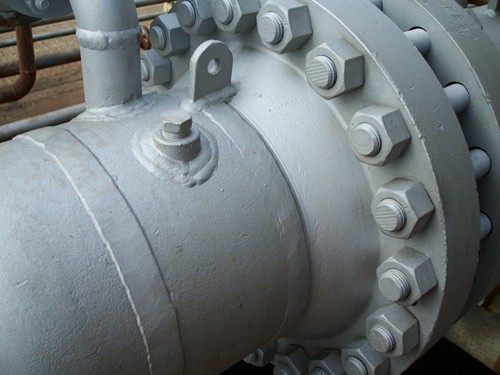As most manufacturers who work with shell and tube heat exchangers know, fouling can be detrimental to an operation. It is crucial that all equipment that goes into processing a product is working at its optimal capacity. To ensure this, manufacturers and operators need to take the time to inspect and clean shell and tube heat exchangers.
However, this is easier said than done. Cleaning a shell and tube heat exchanger is no easy task, especially for those with hard-to-access tubes. In addition to how difficult the process is, taking a day or two to inspect and clean your machines will result in lost production and therefore, lost revenue. It’s important to think about which day is best to minimize the losses incurred by scheduled maintenance. It is also crucial to plan it ahead of time, not only to account for the downtime, but also to plan out the turnaround schedule to ensure everything goes smoothly.
“Taking a day to clean your machines will result in lost production.”
Knowing when to clean
In sanitary industries, like food, dairy and pharmaceutical, there are often well established protocols established for the timing of heat exchanger cleaning. These cleanings are most commonly accomplished through the use of an automated CIP (clean-in-place) system that will clean and sanitize the tubing without having to disconnect the piping or exchanger parts. These cleanings are often done daily, weekly of between batches of product.
According to Conoco Systems and Conoco Consulting Corp., companies in more industrial settings can determine whether a maintenance day where machines would be offline is worthwhile by considering the hourly cost of the losses over time and the cost of fouling. Determining the right time for the loss to be at a minimum will tell manufacturers what the best cleaning intervals are.
Chemical Processing explained that over the past half-century, companies have changed the way they view scheduled maintenance days. In the past, these cleanings took place one or more times a year. The years have brought equipment that is more reliable and requires fewer cleaning days. Today, the norm is closer to cleaning once every four to 10 years. Of course, this depends on the exchanger type and what it is being used for. Some materials that pass through an exchanger are less prone to fouling than others. For this reason, it is important that operators and manufacturers know the signs of fouling and the nature of the chemicals and products they work with.
There are many advantages to going several years without a cleaning. The fact that cleanings are less necessary indicates the resiliency and efficiency of the exchanger. It also means there are fewer days during which the company loses profit due to ceased production. However, there are some downsides to this as well. Chemical Processing points out that since the last turnaround day may have happened as long as a decade ago, fewer operators and maintenance experts will be familiar with the process of cleaning and inspecting the machines. Because of this, it is important that all people involved in the cleaning day be properly educated and prepared for it.
Getting prepared
Chemical Processing advised people getting ready for a turnaround day to make a checklist of everything that needs to be completed on that day. This will help someone who is inexperienced or out of practice keep track of all necessary tasks. This list should include recording how the machine is operating just before you shut it down, whether all the measuring tools available make sense or if others would be best, layout dimensions for the machine and all its parts, and whether there is any damage or other factors that could cause harm to the product or machine later on. It is also important to have any replaceable spare parts on hand, like gaskets, O-rings and hardware, so that any damaged or compressed parts can be replaced before the unit is re-connected and brought back on line. Because exchanger parts can be very heavy, it is also important to have a safe lifting plan with adequate clearance to remove bonnets, piping and other parts in order to gain access to the tube bundle.
How to clean
If the company will allow photography of the equipment, it’s a good idea to take pictures of everything mentioned in the notes taken throughout the day. This will help explain any damage encountered and provide reference for the notes the person performing the turnaround takes.
Conoco Systems explained there are many ways to clean a shell and tube heat exchanger, though most require being offline. The most widely chosen method is mechanical cleaning. This involves determining what kind of deposits you will be removing from the tubes. Deposits range from small amounts of silt to substances that are more difficult to remove, depending on the materials that are used in the exchanger. Once this is determined, decide which cleaning method is appropriate. Some common examples include brushes, used for lighter debris; calcite cleaners, used to remove stubborn calcite deposits which couldn’t be removed with acid; and metal tube cleaners, used for harder deposits.
Hydroblasting has also been commonly used, though precautions to reduce risk of injury or tube damage must be taken if managers choose to go with this option. Good Way explained this method involves water pressurized to 10,000 to 25,000 pounds per square inch, which is then blasted through the tubes to remove deposits.
Chemical cleaning is another preferred method, though it is a more expensive option, Conoco Systems explained. Chemicals that are mildly acidic will take off debris faster and more efficiently than a mechanical process. However, the tubes will still need to be cleaned of the chemicals used to prevent contamination or environmental hazards.

